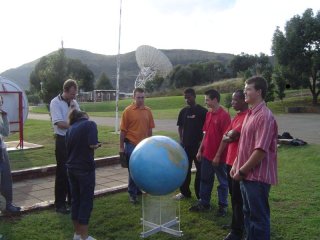
Click on image for LARGE version

Johan Janse van Rensburg of the University or Pretoria kindly provided us with this report and photographs of a visit to HartRAO.
The University of Pretoria has a school outreach programme called "UP with Science", of which the main aims are the awareness making of all the different scientific fields, careers opportunities, as well as to encourage the further study of science.
Learners from all around the Pretoria region are admitted to the programme. The programme starts with grade 10 learners who show interest in science, who get nominated by their science teachers. They then make visits through the different departments in our science faculty ranging from plant pathology to geology. Each department gives an overview of the work they do, how they do it and why they do it. This also consist of many hands-on experiments in each department or field trips to interesting places to get the learners actively involved. When these learners start with grade 11 they get the opportunity to select and get involved with a small research-based project, which each department then offers. They work in groups on a specific topic, and at the end, each group makes a presentation of the work they did for all their fellow learners. When they reach grade 12 they continue to work on various other projects, also involving the awareness making of science in general. After the learners finish their matriculation, they then obtain a bursary from the University of Pretoria to study anything they want, which is one of the biggest rewards of completing the programme.
In 2006 the department of physics and chemistry decided to present a project together for the grade 11 students. The topic chosen was the electromagnetic spectrum. The idea was to allow the learners to investigate different parts of the spectrum, especially the parts that are less known to them. They were also to investigate different applications of different parts of the spectrum in their daily lives.
They started by looking at the visible part of the spectrum and investigating how light is produced and how human vision works. They then made a very simple near infrared camera, by using a commercial webcam which uses a CMOS sensor that is also sensitive in the near infrared region. They just removed the infrared filter and placed a visible light filter in front of the sensor. It was great fun to investigate how different objects reflected and others absorbed near infrared light. They also tried to make ultraviolet images by using a CCD detector of which the filters in front were also removed. It is known that some flower species have some very interesting patterns in ultraviolet, which is only visible to some insects. That experiment was however not so successful, since they did not had the appropriate UV filters. On the chemistry side of the project, the learners performed chemical analysis by looking at the infrared absorption spectra of various chemicals. After some discussions about x-rays and gamma rays it was time to also include the longer wavelength part of the spectrum - radio waves.
This particular group already had a good idea of how radio transmission and receiving work, since they have built their own simple AM radio receivers during their grade 10 visit in the physics department. We decided to take the learners to the Hartebeesthoek Radio Observatory to see at first hand how a big radio telescope works and to see how radio waves from space can also provide one with lots of information about the universe we live in.
At our arrival, we were greeted with a strangely shaped pattern painted on the parking space in front of the visiting centre. Dr Mike Gaylard, who was our guide, got our brains quickly in first gear trying to figure out what it is and how it works. The diagram, known as an analema, had us intrigued on how much one can learn about the motion of the earth relative to the sun using only the shadow of your own body.

Not far away, stood our second challenge, to position the massive replica of the earth in the correct way relative to the sun.
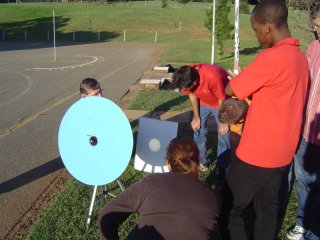
We still had time before the sun set to have a look at sun spots using a small refractive telescope with a solar filter and projection screen. At that time we however did not observe any sun spots.
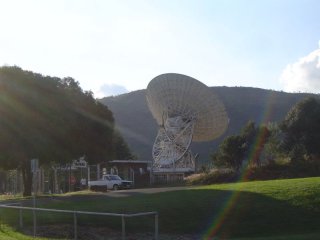
The 26-m radio telescope (above) has a parabolic main reflector. The idea of using a parabolic reflector to focus radio waves on a detector was then illustrated by a simple setup using a TV satellite dish and an amplifier circuit. The effect of black body radiation was also demonstrated by pointing the dish to some of the "hot" learners as well as the surrounding buildings. The sun could also be detected illustrating that the sun is a strong source of radio waves.
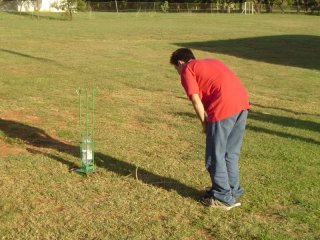
While there was still enough light outside, the learners got a chance to put their knowledge on Newtonian mechanics to the test, by shooting bottle rockets up in the sky. The aim was to determine how much water they need to put in to make the bottle fly the highest. A few isolated rain storms resulted from all the efforts.

Where will the rocket land?
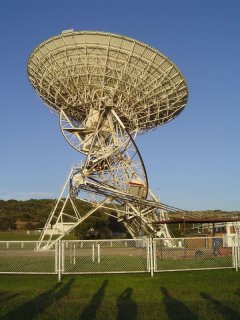
The group was then taken around to the radio telescope to have a close-up look of the telescope structure.
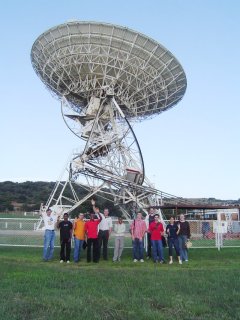
Dr Gaylard told us a bit more about the huge telescope structure and all the scientific instruments used. Seeing the whole telescope structure with a mass of about 250 tones moving had everyone in awe.
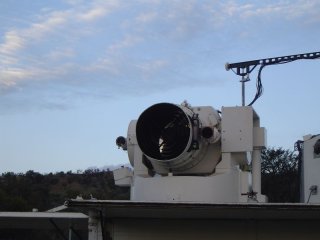
We also had a quick look at the satellite laser ranger situated next to the telescope, before we moved to the control room.
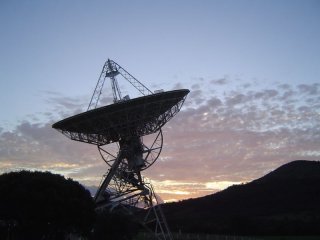
Sunset!
Entering the control room building, everyone first had a look at all the plaques dating from the sixties and seventies space missions. Most of the learners were surprised to learn about the role the telescope played in the early days of space exploration when NASA used the telescope for their deep space network.

Walking through the control room was quite an experience for the learners.

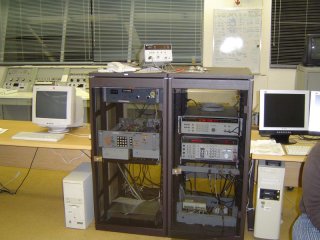
They saw how much technology improved with time, to the point where a few single computers can control the whole telescope using very little space compared with what was used in the past.
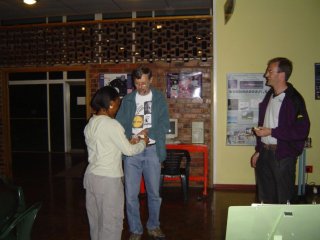
A presentation on the work done using the telescope further pointed out the scientific knowledge gained using the telescope as an instrument. The fact that not only very accurate astronomical but also geological information on the Earth can be obtained using the telescope, would be remembered by the learners.
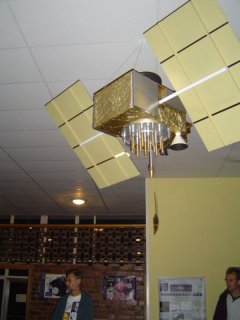
After everyone got some sandwiches for dinner, the learners further explored the interesting exhibitions in the visiting centre. These ranged from your own eye staring back at you via the laser reflector on a model satellite, determing your weight on the different planets, to looking at the African star constellations.
The visit was indeed a great learning experience for all the learners.
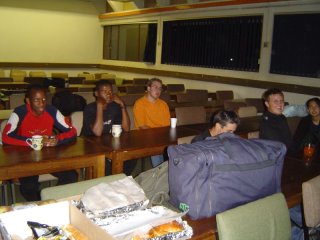
Learn more about Up with Science at www.upwithscience.up.ac.za.